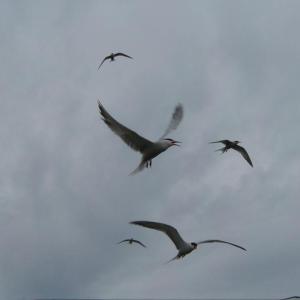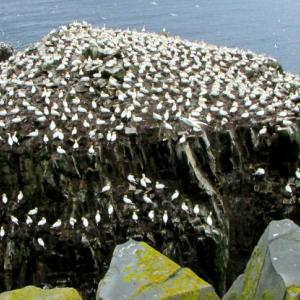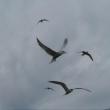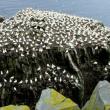Repairing Bird Populations Impacted by the World’s Largest Oil Spill
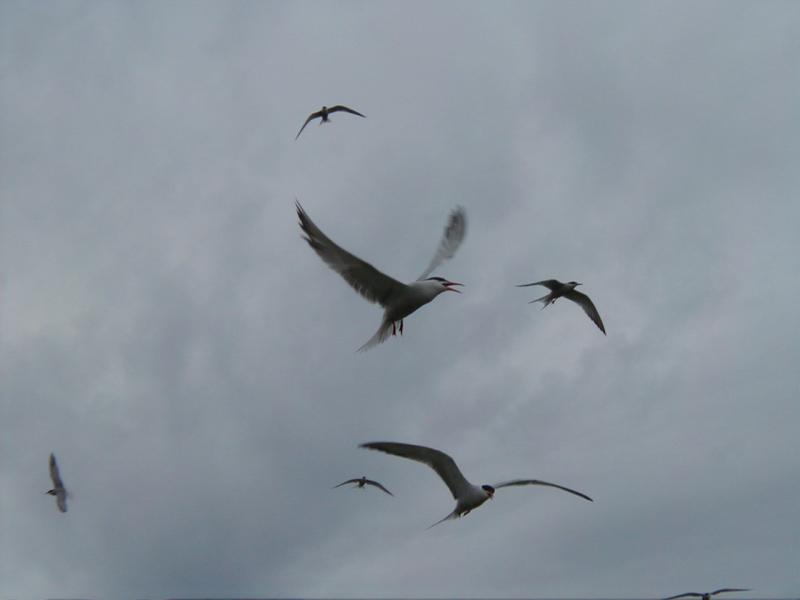 Common terns were migrating through the Gulf of Mexico when the BP’s Deepwater Horizon spill occurred in 2010. Many of them were headed to places like the many lakes of Manitoba where they breed. Courtesy of Jeff Wells.
Common terns were migrating through the Gulf of Mexico when the BP’s Deepwater Horizon spill occurred in 2010. Many of them were headed to places like the many lakes of Manitoba where they breed. Courtesy of Jeff Wells.
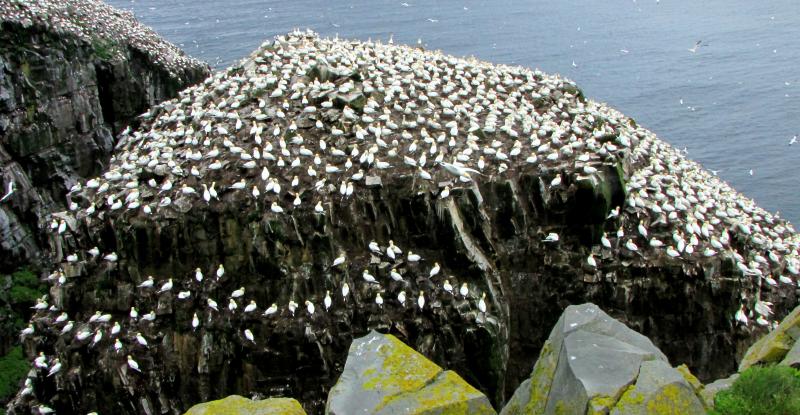 Northern gannet nesting colony at Cape St. Mary's, Newfoundland, one of the six nesting colonies of the species in North America. Many gannets were oiled by the Deepwater Horizon oil spill, as they migrate to the Gulf during the winter months. Photo by D. Gordon E. Robertson, courtesy of Wikimedia Commons.
Northern gannet nesting colony at Cape St. Mary's, Newfoundland, one of the six nesting colonies of the species in North America. Many gannets were oiled by the Deepwater Horizon oil spill, as they migrate to the Gulf during the winter months. Photo by D. Gordon E. Robertson, courtesy of Wikimedia Commons.
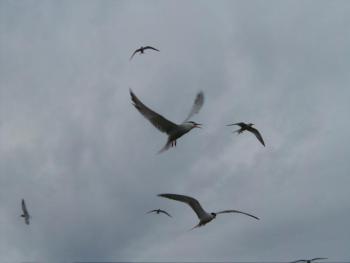 Common terns were migrating through the Gulf of Mexico when the BP’s Deepwater Horizon spill occurred in 2010. Many of them were headed to places like the many lakes of Manitoba where they breed. Courtesy of Jeff Wells.
Common terns were migrating through the Gulf of Mexico when the BP’s Deepwater Horizon spill occurred in 2010. Many of them were headed to places like the many lakes of Manitoba where they breed. Courtesy of Jeff Wells.
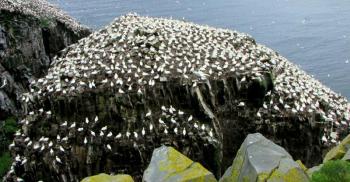 Northern gannet nesting colony at Cape St. Mary's, Newfoundland, one of the six nesting colonies of the species in North America. Many gannets were oiled by the Deepwater Horizon oil spill, as they migrate to the Gulf during the winter months. Photo by D. Gordon E. Robertson, courtesy of Wikimedia Commons.
Northern gannet nesting colony at Cape St. Mary's, Newfoundland, one of the six nesting colonies of the species in North America. Many gannets were oiled by the Deepwater Horizon oil spill, as they migrate to the Gulf during the winter months. Photo by D. Gordon E. Robertson, courtesy of Wikimedia Commons.
In April of 2010, the unthinkable happened. An oil drilling platform in the Gulf of Mexico off Louisiana exploded. The operation, called Deepwater Horizon and operated by international corporate giant BP, was horrific event. Eleven workers were killed, and two days later, the drilling platform sunk to the bottom of the Gulf. The uncapped oil well continued spewing oil into the sea for 87 days. By the time it was finally capped, it had poured four millions gallons of oil into the habitat of birds and other wildlife living there.
It was the largest oil spill in history.
Oil polluted the shores across the Gulf of Mexico and the waters of the Gulf for years. Many marine and coastal animals were killed, and their habitats, destroyed. By some estimates, a million or more birds became coated in the horrible substance and died. Resident nesting birds like laughing gulls, brown pelicans, and royal terns were particularly hard hit. But because the spill spanned both spring and fall migration periods, bird species that pass through the Gulf or winter there were also killed. This included species like northern gannets, common loons, common terns, black terns, and many other species.
In 2016, BP agreed to pay $8.1 billion as part of a settlement for the natural resources damage caused by the spill. Many projects have been undertaken across the Gulf States with those funds, provided to restore coastal habitats including bird nesting islands and feeding areas. Since those efforts were completed, species like brown pelicans, laughing gulls, and royal terns have returned to many of these restored islands. Projects have also been completed from the settlement funds in the Midwest for protection and restoration of black tern nesting habitat, and in Minnesota for common loons.
And now there is more good news.
A new restoration plan for migratory species impacted by the spill has been released for public comment. It includes seven recommended projects that together will expend $26 million from the settlement monies to restore bird populations from Canada to the Caribbean. Much of the work will involve using seabird restoration techniques pioneered right here in Maine through the Audubon Seabird Institute (otherwise known as Project Puffin).
One project in the new restoration plan will increase nesting success and protect colonies of common terns in Manitoba--the origin of many common terns that migrate through the Gulf. Another project will focus on restoring and improving northern gannet nesting colonies in the Gulf of St. Lawrence and on islands off Newfoundland (the only places on this side of the Atlantic where they breed). A set of other projects will remove introduced predators and invasive animals and plants from seabird nesting islands in the Caribbean.
More than two decades after the disastrous BP Deepwater Horizon oil spill, the work still goes on to try to reverse the horrible impacts. This new restoration plan is something that we should all support. You can see the plan and provide public comment, including your positive support, through April 28 at this link: https://www.gulfspillrestoration.noaa.gov/2023/03/open-ocean-trustees-seek-public-comment-draft-restoration-plan-3
Jeffrey V. Wells, Ph.D., is a Fellow of the Cornell Lab of Ornithology and Vice President of Boreal Conservation for National Audubon. Dr. Wells is one of the nation's leading bird experts and conservation biologists. He is a coauthor of the seminal “Birds of Maine” book and author of the “Birder’s Conservation Handbook.” His grandfather, the late John Chase, was a columnist for the Boothbay Register for many years. Allison Childs Wells, formerly of the Cornell Lab of Ornithology, is a senior director at the Natural Resources Council of Maine, a nonprofit membership organization working statewide to protect the nature of Maine. Both are widely published natural history writers and are the authors of the popular books, “Maine’s Favorite Birds” (Tilbury House) and “Birds of Aruba, Bonaire, and Curaçao: A Site and Field Guide,” (Cornell University Press).

